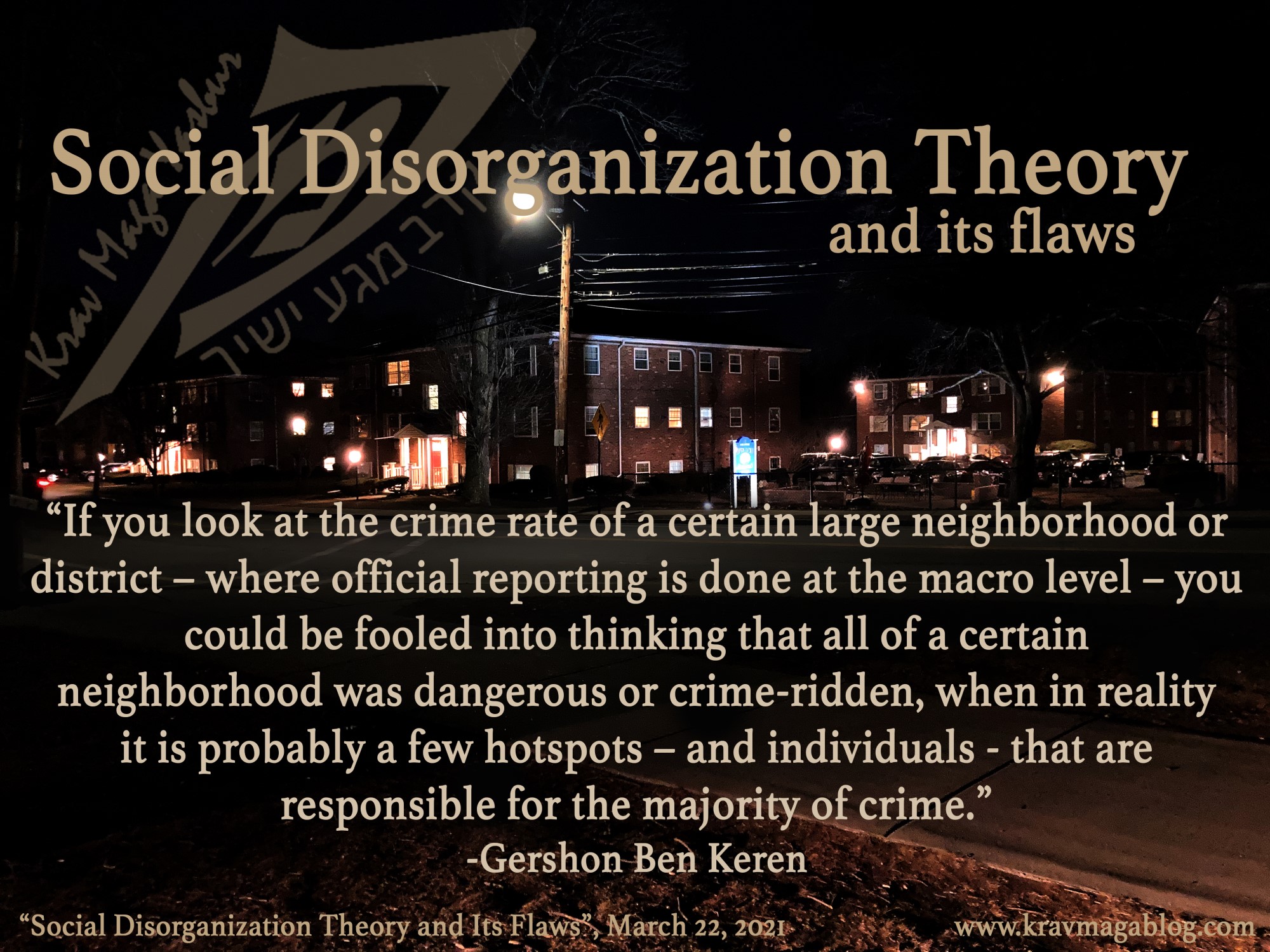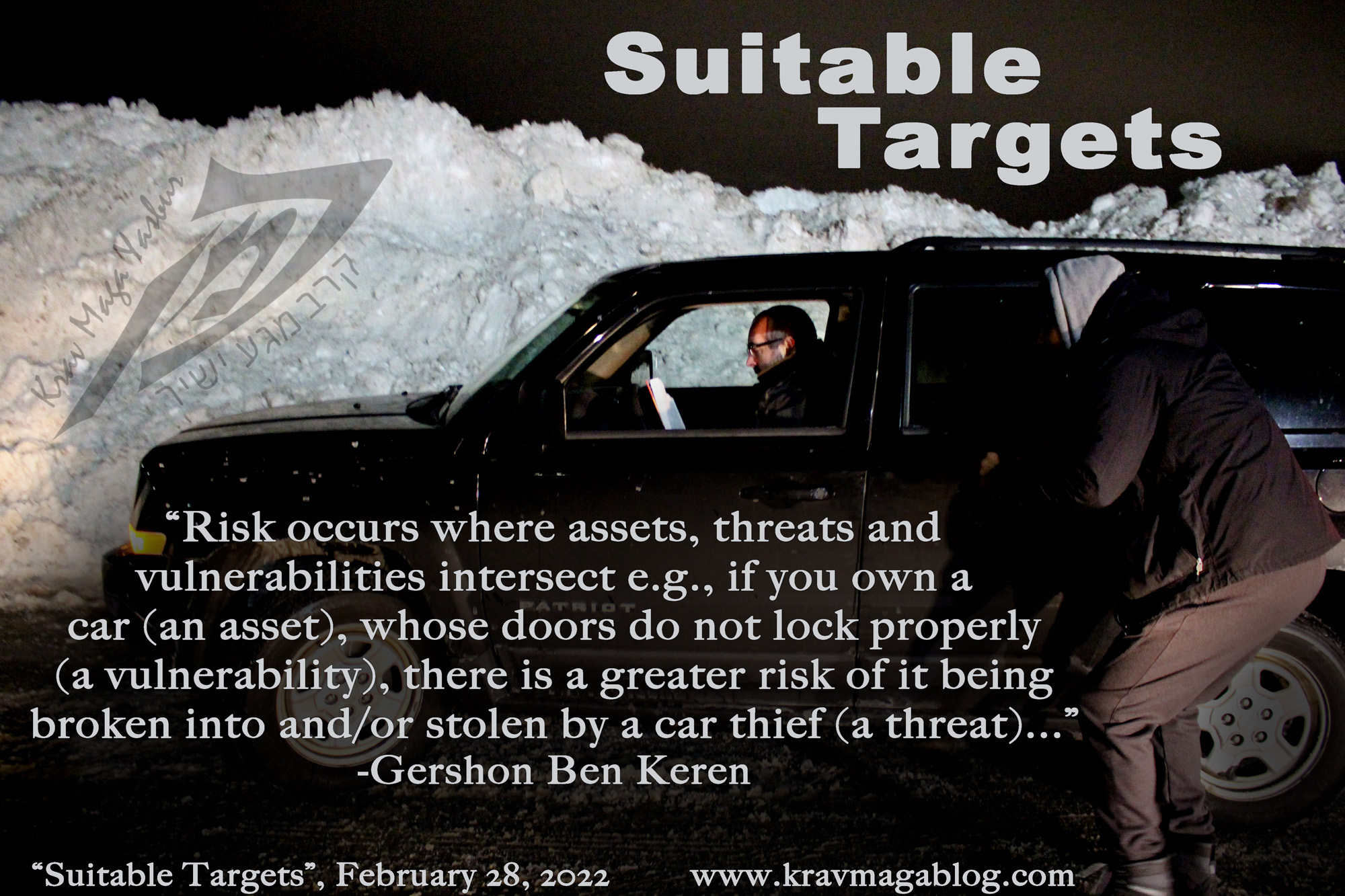Suitable Targets, is an article written by Gershon Ben Keren, a 5th Degree Black Belt in Krav Maga, who teaches Krav Maga in Boston, MA. He has also authored three Amazon best-Selling Books on Krav Maga.
What makes a suitable target or victim differs by offenders e.g., a suitable target for a sex offender who victimizes teenage girls will not be the same as one targeted by an offender whose preference is for young boys etc. An experienced shoplifter will probably have more suitable targets, than someone who is looking to steal for the first time, as they are going to have a more intricate understanding of how store security operates, and have more options etc. The same can be said of a burglar who has broken into a large number of homes and is aware of a variety of ways to break into a property compared to someone who is new to burglary. Time of day also plays a role in suitability e.g., a house that is unoccupied during the day because everyone is out at work or school etc. is a more suitable target for a burglary than at night when everyone is home, and the premises are occupied i.e., there is a capable guardian present (next week’s article will look at what constitutes a capable guardian). In saying all of this, suitable victims and targets do share some commonalities e.g., they have to be available – a car that is being driven can’t be broken into, as it is moving and occupied, however this does put it at risk for a carjacking etc. One of the nice things about routine activity theory is that due to its simplicity, though it is far from simplistic, it has the flexibility to be used with other theories and worked into other frameworks, such as “risk”. Risk occurs where assets, threats and vulnerabilities intersect e.g., if you own a car (an asset), whose doors do not lock properly (a vulnerability), there is a greater risk of it being broken into and/or stolen by a car thief (a threat), than one that has up to date modern locks, and GPS tracking etc. When looking at defining what a “suitable” target or victim, is we can look at assets that have vulnerabilities an offender (threat) can exploit. We can better understand suitability by understanding vulnerabilities.
Vulnerabilities are those things that a threat can exploit. Predatory individuals prey on and exploit vulnerabilities. Pedophiles and child molesters (adults whose primary sexual preference is adults, but who sexually assault children and juveniles) will target those they deem vulnerable e.g., children with busy parents who aren’t able to give their children the attention that they seek, etc. A healthy and natural search for adult attention and affection that is unmet can be a vulnerability that a child sex offender looks to deliberately exploit. It is important not to look to blame individuals for creating vulnerabilities e.g., the single mother who is holding down two jobs and looking after an aging and ill relative may not have enough time to provide the level of attention that certain of her children may need. The only person who is to blame if a child molester took advantage of this situation was the perpetrator, not the victim or their family members. If someone leaves a window open (a vulnerability) that a burglar exploits, they are not responsible or to blame for having their house broken into, even though their action/lack of action may have made their house a “suitable” target etc. Blame and responsibility should always be attributed to the perpetrator, rather than those who were victimized. However, reducing vulnerabilities is a practical measure in reducing target suitability, and therefore risk.
Suitability also suggests a degree of rationality when deciding upon a target and indicates that there is a thought process that offenders engage in when selecting someone to victimize, even if this involves targeting the first person they come across. Whoever a street robber selects, suitability will in all likelihood have to fulfill at least two criteria: a belief that the person has whatever goods or cash the mugger requires, and that they are likely to comply and not fight back. Such offenders are not looking for a fight but rather a quick and easy transaction that sees them exit the interaction without any real fuss. This means that these offenders are looking for signs of compliance to assess suitability. One sex offender who targeted young women used to hang out in supermarkets, watching how female shoppers interacted with each other e.g., if he saw a woman quickly apologize when another accidentally knocked into her cart with theirs, he judged that this individual was extremely conflict-averse, as they were apologizing for someone else’s actions – it should have been the other shopper who said sorry. Assessing that such an individual was unlikely to refuse any demand he made, he would follow them outside to the parking lot, where he would walk up to them and quietly order them to come with him to his car. How we act, interact, and behave in public can give predators a clue as to how easily we will comply with their demands e.g., if when we are walking in a crowd and we are continually moving out of everyone’s way, and doing so in an unconfident, almost furtive/apologetic manner, we may be sending a signal to those who mean us harm that we are a suitable target. This doesn’t mean that we need to be those people who simply barrel ahead expecting everyone else to move out of our way, but rather that we move with purpose, rather than reacting to everyone else’s movement.
Suitability may be based on many factors, some of which aren’t things that we would think might make us suitable, and so have no control over e.g., Ted Bundy’s victims all had longish, dark hair, parted in the middle – he let one woman go who he’d selected some days, weeks earlier, when he pulled off a winter hat she was wearing, revealing that she’d had it cut differently a few days earlier. However, there are other things over which we do have control, such as making sure we lock our car and close open windows when we are not in our houses, etc.
0 COMMENTS














